The cantilever rear suspension idea wasn’t new. Vincent had a patent on something similar in 1927, and in the mid-1970s Yamaha swooped down on the same concept for long-travel dirtbikes. But William G. Davidson had his own ideas and very different motives to apply to the concept, and he changed history by honoring history with his creation of the Harley-Davidson Softail.

Willie G. had become the face of The Motor Company in the 1960s because he was, and is, the real deal. His surname is on the gas tanks of Milwaukee’s finest, and his lineage was worth promoting and pushing into the future. A designer and stylist at heart, and professionally trained at the Art Center College of Design, Willie G. was ideally placed as H-D’s keeper of the flame.
The grandson of Harley-Davidson co-founder William A. Davidson, Willie G. joined The MoCo’s styling team in 1963 and was promoted to VP of styling in 1969. He burnished his credentials with the introduction of the FX Super Glide in 1971 by melding a Big Twin engine with Sportster suspension. Willie next broke the mold with the XLCR cafe racer first seen in 1976 and largely ignored on the sales floor from 1977-79, but it’s revered today.
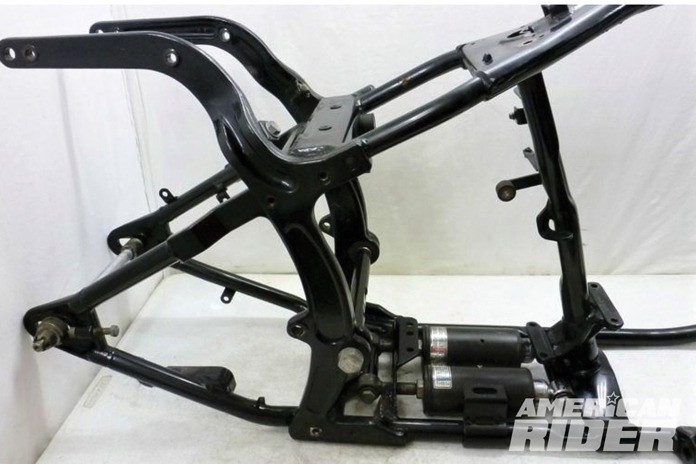
For his third time out, the G. man wanted to do something that captured the spirit of H-D’s past in a modern and unique way, a task much more difficult than it might sound. By the early 1980s, his FX line was solid if not spectacular, while the Harley-Davidson image had congealed around dressers and Sportsters. Willie knew about the forthcoming Evo Big Twin engine and understood the traditional hardtail allegiance, too.
Also by Kip Woodring: Early Rider: 1900-1917
From 1903 to 1957, Harley’s Big Twins had hardtail rear ends, and the booming chopper/custom crew loved it and longed for it. Although H-D had modern swingarm suspension all through its lineup, over the years the rigid frame had become the iconic look for the brand.
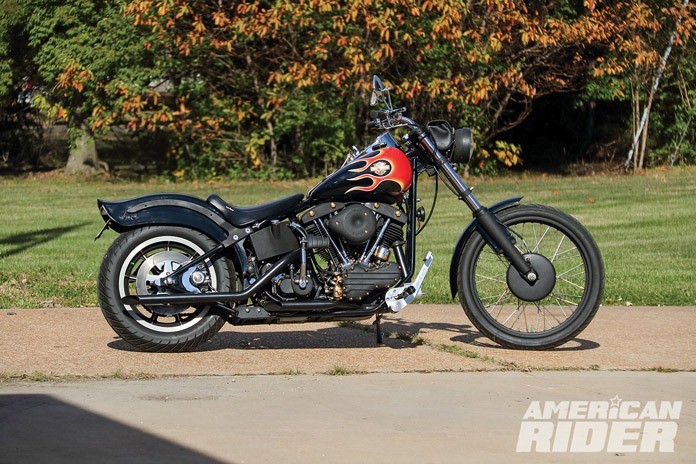
With all that in mind, one day in August of 1976, Willie met the man with the plan. Bill Davis ran a custom parts enterprise called Road Worx and had a patent (US4022284) on his notion of how to get the look of a hardtail while offering useful suspension compliance. Willie began negotiating the acquisition of the patent with Davis.
Details of the transaction are scarce, but one that’s been cussed and discussed ever since is the royalty value of the deal inked in January 1982. Davis certainly got paid, but how much and for how long is not known.

Once Willie’s crew and the engineering department got to work on the project, details were changed, tradition was observed, clever features were added, and testing ensued. The end result was introduced in late 1983 as an ’84 model called the Softail. It was an instant sensation.
The cues were all there: bobbed rear fender, “horseshoe” oil tank, Fat Bob gas tank, forward controls, Wide Glide fork, ape hangers, a small headlight, and the kicker – literally – an electric starter and a kickstarter. The Evo-powered Harley-Davidson Softail delivered Harley hardtail heritage in an up-to-date, practical, user-friendly, reliable, and handsome package. And it was the only Big Twin (Touring, FX, and FXR) from the era that was never offered with a Shovelhead engine.

The first Evo Softails sold out immediately and created waiting lists and price gouging for the first time in decades. To say Willie’s achievement as a stylist was a success is to massively understate the impact of his new bike.
Also by Kip Woodring: Springer Fork: Types, Timeline, Tech, and Tidbits
Two model years later, the 4-speed and kicker gave way to a 5-speed, and model proliferation within the Harley-Davidson Softail family was well underway. Evo Softails were offered in several guises: the Nostalgia/Heritage FL, Springers in both FX and FL versions, the Bad Boy, and another star iteration, the Fat Boy. They featured about 3 inches of rear suspension travel.
Style is one thing, engineering another. The original Softail wasn’t perfect. None of the other Big Twins had solid-mount engines, so the Softail wound up being the last of the “Milwaukee Vibrators.”
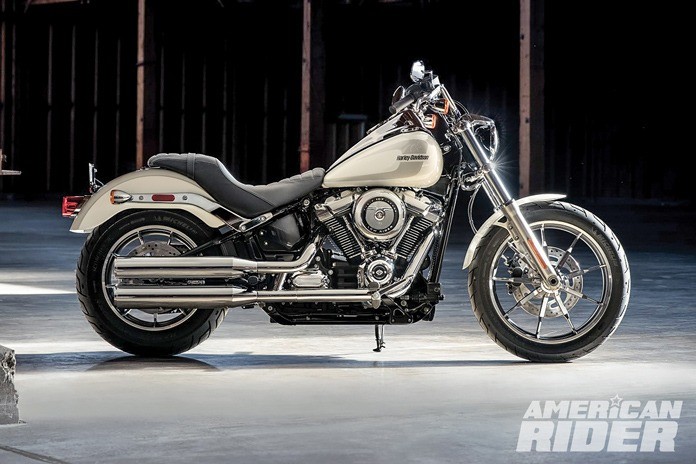
Ironically, the rear suspension was also not without fault, and the compromises of a heavy cantilever rear suspension with shocks intended to work in extension began to show. The Softail’s wheel travel was decent, but it had to work through less than an inch of shock stroke.
When the wheel traveled an inch, the shock shaft only had a quarter-inch to do its job. Heavy payloads meant much of the available wheel travel was used up before you hit any bumps or dips. On top of that, shock damping was minimal. Performance further deteriorated when the fat rear wheel craze took hold. What was a revelation in 1984 became anachronistic in the late ’90s.
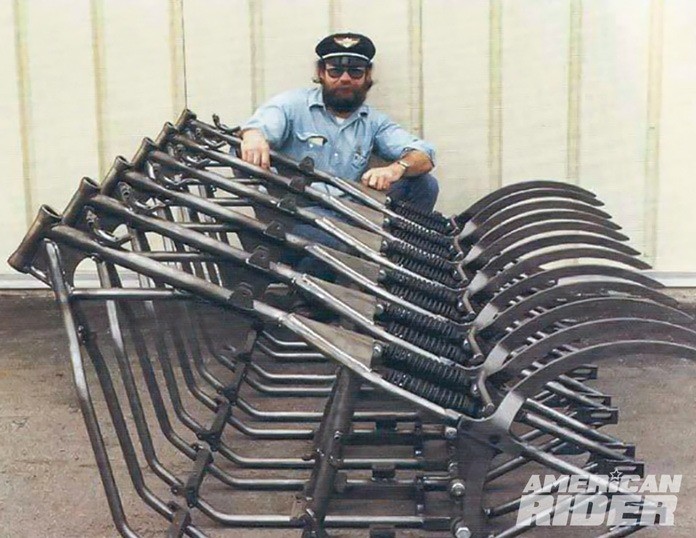
The vibration issue was dealt with in 2000 by the introduction of the counter-balanced Twin Cam “B” engine. Development of Softail variants continued apace, with Deuce, Rocker, and Crossbones added to the lineup. Overall handling and ride were improved through the years by tweaks to the frame and suspension. The next iteration would take the platform to a higher level.
The Softail was reborn in 2017 with the Milwaukee-Eight platform, which also effectively killed off the Dyna series. Dyna fans were saddened – until they rode the excellent M-8 version.
The Harley-Davidson Softail was significantly improved with a totally new and much stiffer frame (including three different neck angles for different applications), and a single top-mounted shock featuring (finally) a proper 2:1 wheel-travel-to-shock-stroke ratio acting on a lightweight aluminum swingarm. Engineering matched style for the first time, surely pleasing both Willie and Bill Davis.


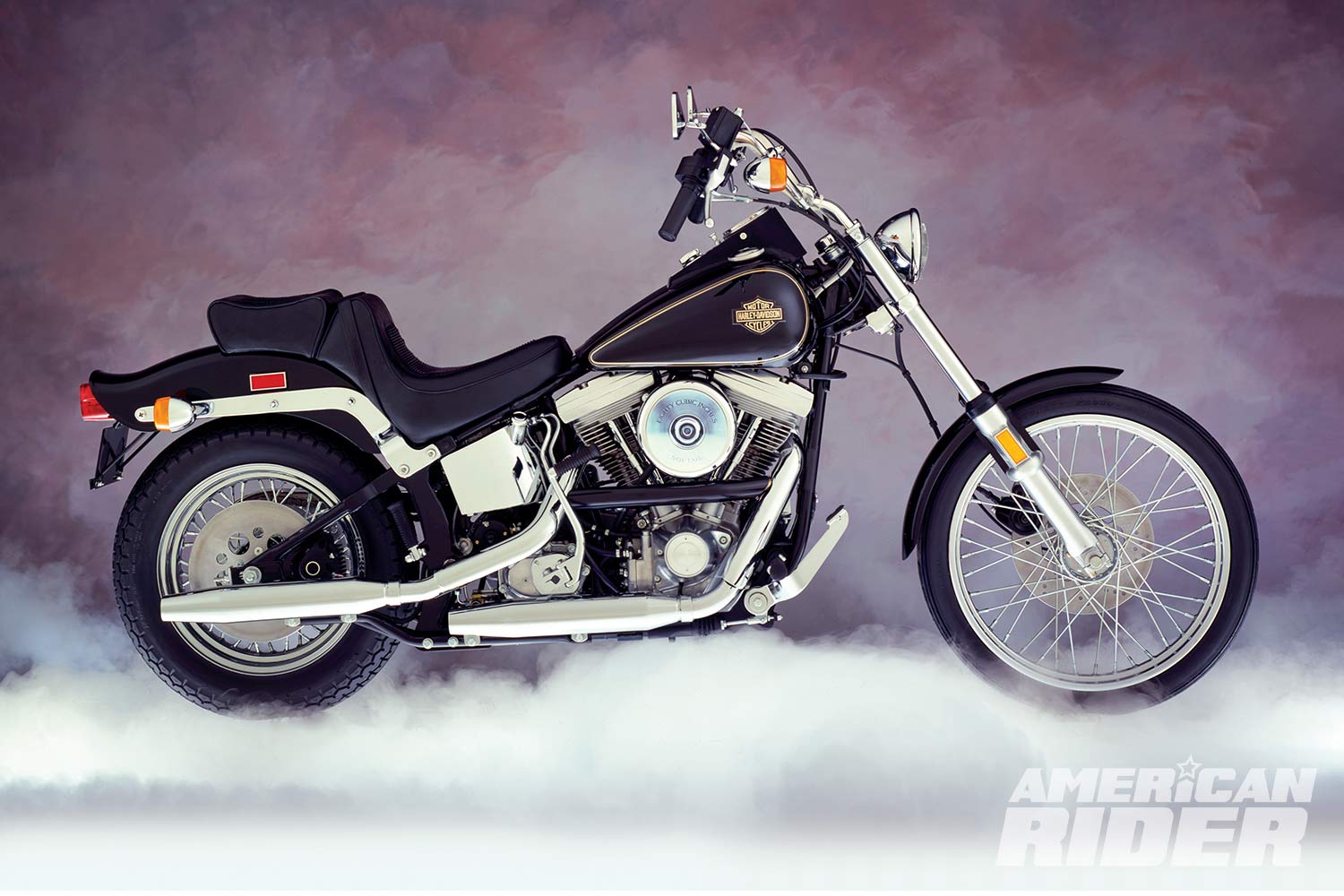















The Evo Softail was pure Genius. In a time when AMF took the MoCo to an all time low, the 84 Softail literally saved Harley Davidson from total ruins. It all came at the right time. After owning two Ironhead Sportsters, and two Shovelheads, I was thrilled to finally find a Engine that was reliable and easy to work on. I will never part with by 1992 FXSTC Softail Custom. The Evo was without a doubt the best engine that Harley ever produced!. Long live the Evo!
Love my 2010 FLSTC. . Its smooth ,it’s sleek and sexy 110 big bore with all the goodies from Triple C cycles in west plains missouri
Love my 2014 cvo softsil deluxe has all the bells and whistles. Rides like a Cadillac.